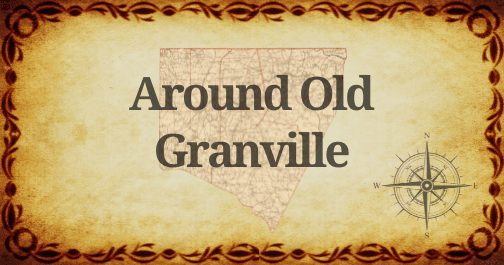We’ve learned from history lessons in school about immigrants who traveled from faraway places, their worldy possessions often fitting in a small suitcase, passing by the Statue of Liberty in New York Harbor to begin their new lives in America.
But did you know that there was a contingent of immigrants who came here after the end of the Civil War to what is now Vance County – all the way from…Canada?
A local man named Samuel Jones Parham got into the real estate business at a time when land prices had tanked as a result of the breakup of the huge plantations during Reconstruction.
Although Parham wasn’t single-handedly responsible for “the Canadian invasion,” Mark Pace quipped, he did go to an area in central Ontario to talk up the great land deals in the area.
“He made a connection in central Ontario,” Pace told Bill Harris on the Around Old Granville segment Thursday’s The Local Skinny! To be specific, he sold land to several families in the towns of Hamstead and St. Mary’s.
Pace said 25 families – for a total of about 400 people – relocated from Canada to Vance County between 1871 and 1873. The majority of these immigrants were first-generation Canadians whose families had come from Scotland, Pace said.
Scotland and Canada both were subjects of the British Crown back then, Pace reminded, and there was a lack of land ownership. “The motivation (to immigrate) was to own your own land,” he said.
Most of the families settled along Sandy Creek, between Vicksboro and Epsom, he said. Families with last names like Buchan, Dickie, Fox, McMillan, Pyree, Stewart and Smith were among those who came south to the United States with the dream of owning property.
“Some of their great- and great-great-grandkids are still here today,” Pace said.
Interestingly enough, there began a reverse migration of sorts back to the same area of Ontario – thanks to a crop called tobacco. Tobacco was being planted – and harvested – in that same area, and many people from here would go back to Canada to work during the growing season.
Samuel Parham died in 1880; his widow died in 1903. Although her husband was a mayor of Henderson, her name is perhaps better known because the original hospital in Henderson was named in her memory: Maria Parham.
Click Play
